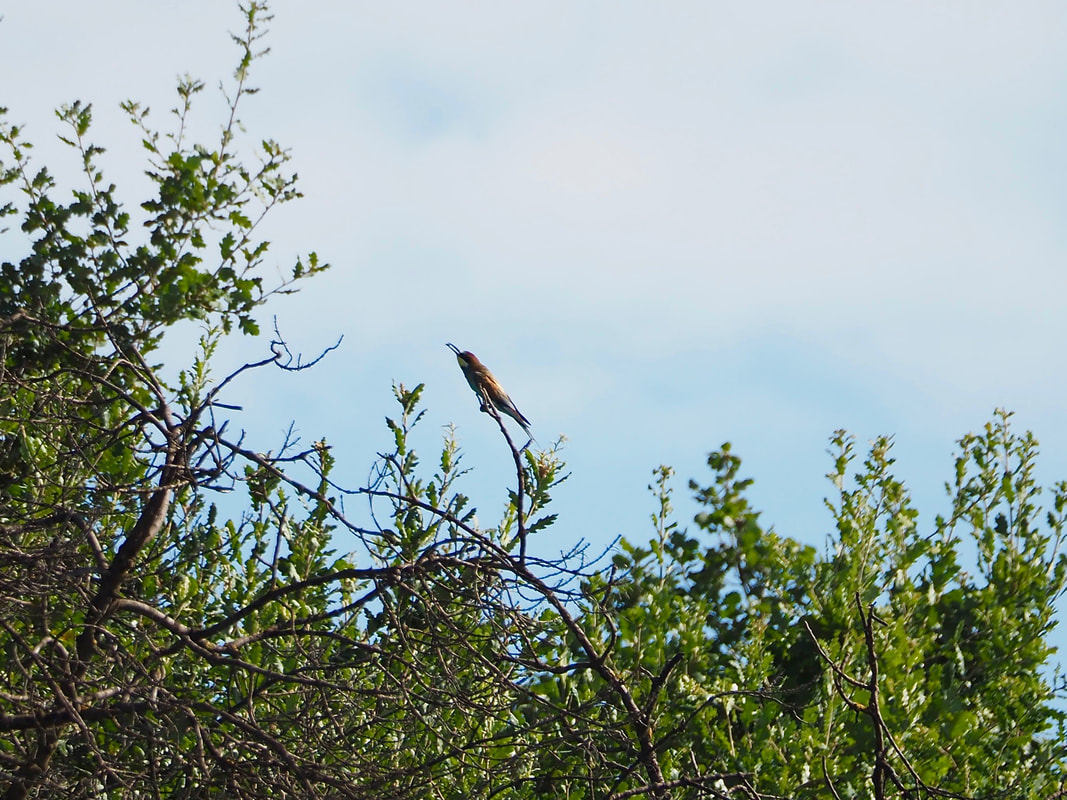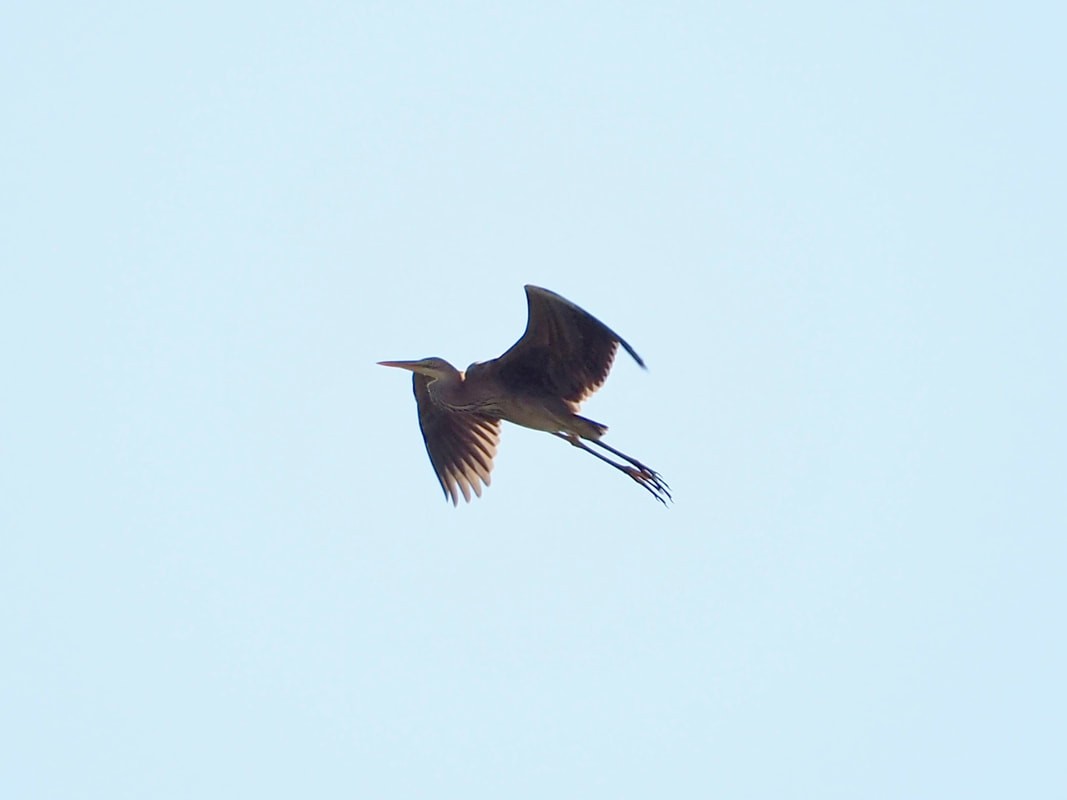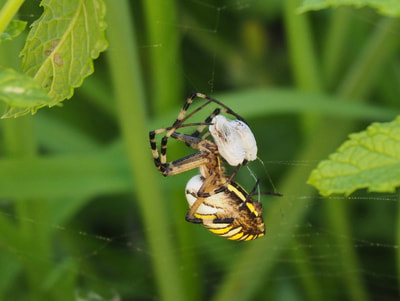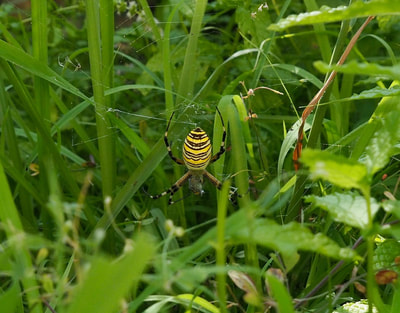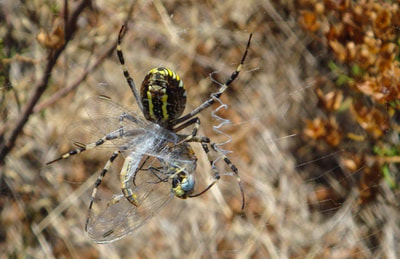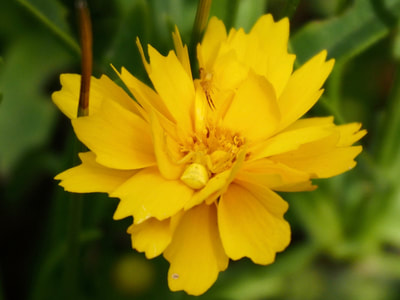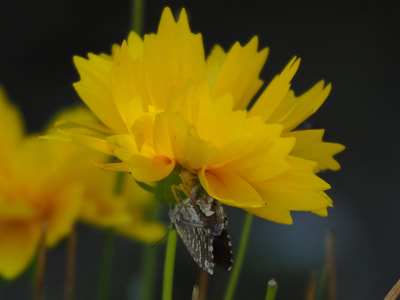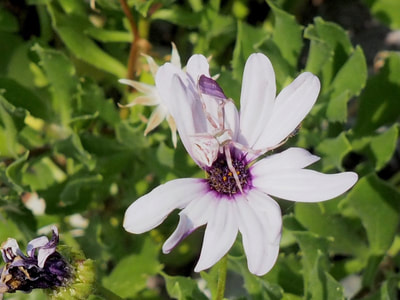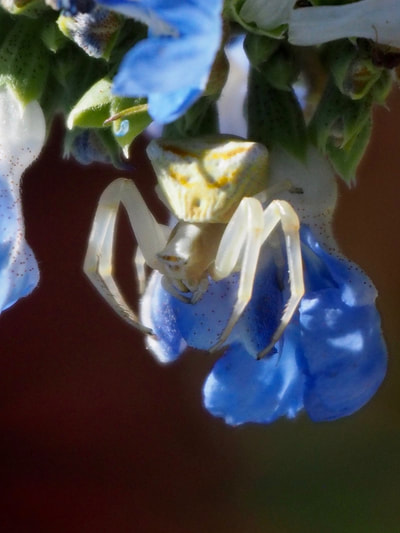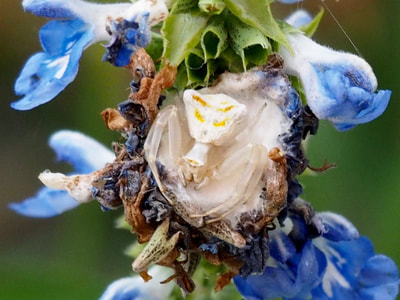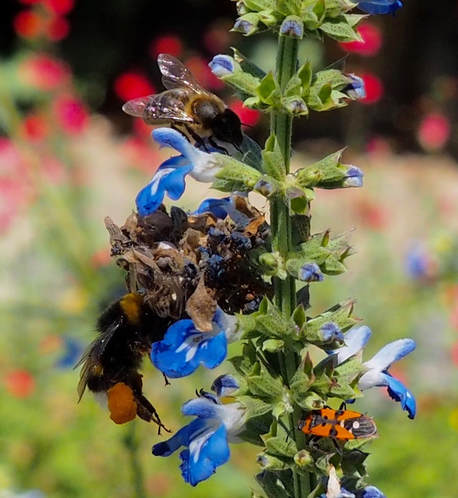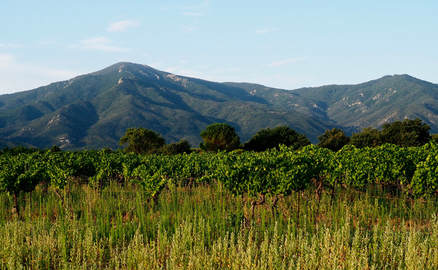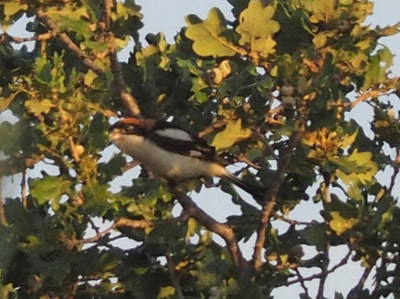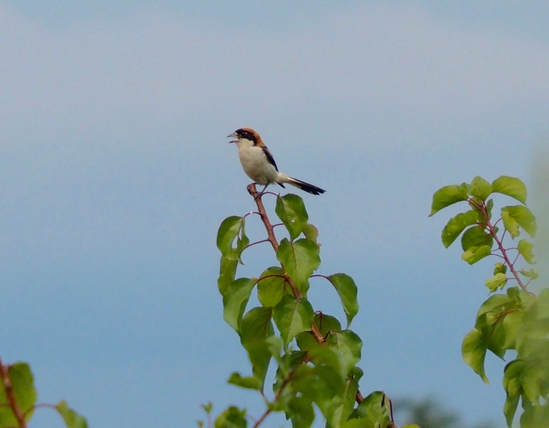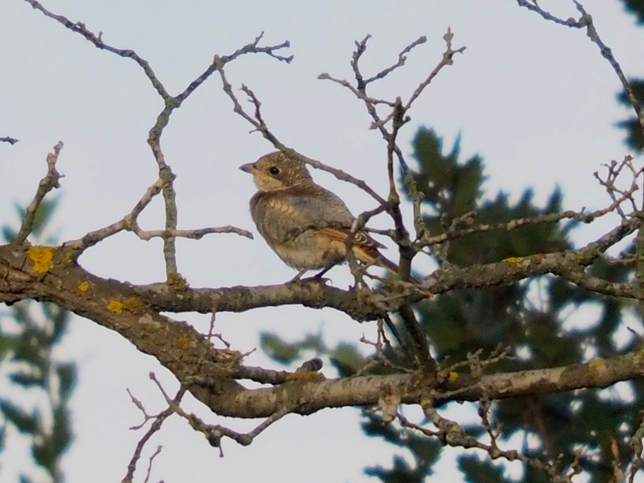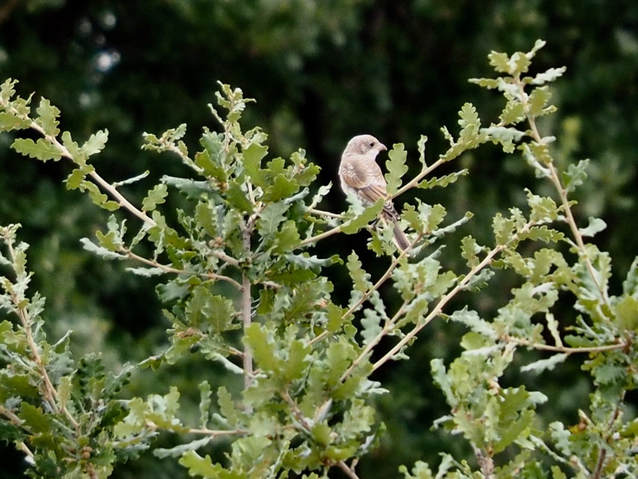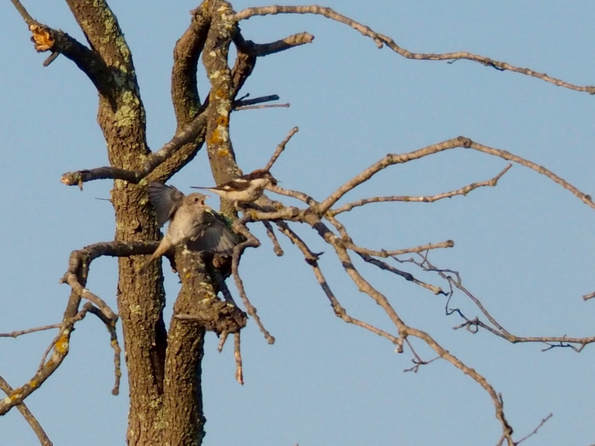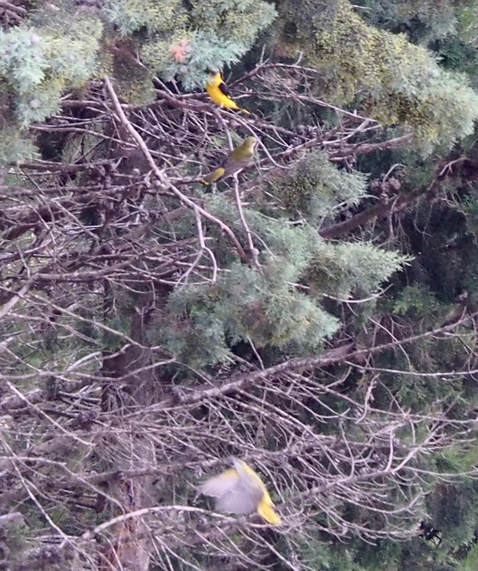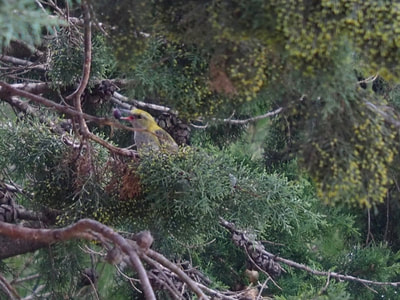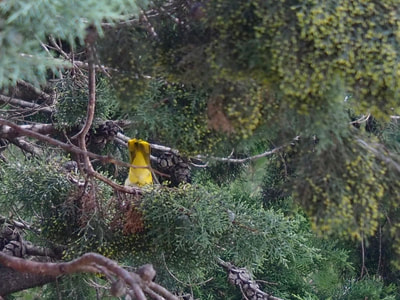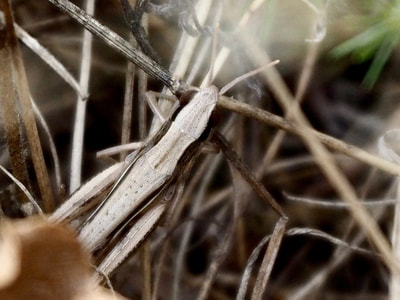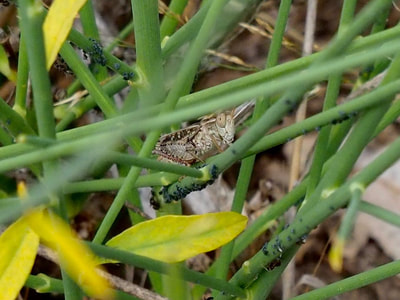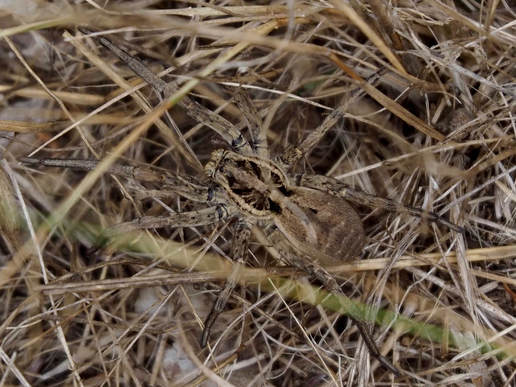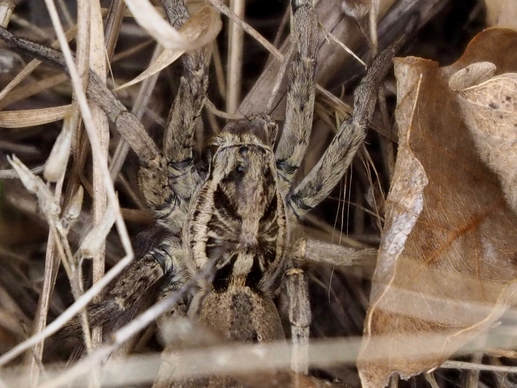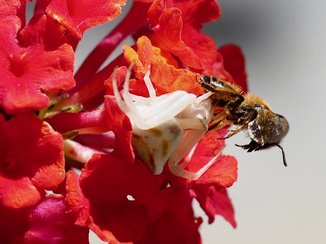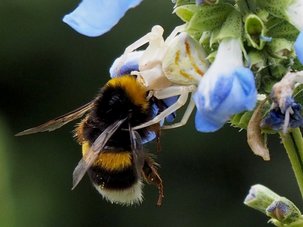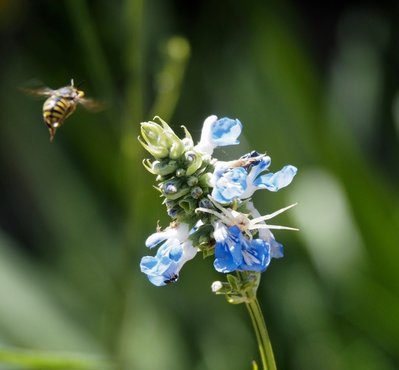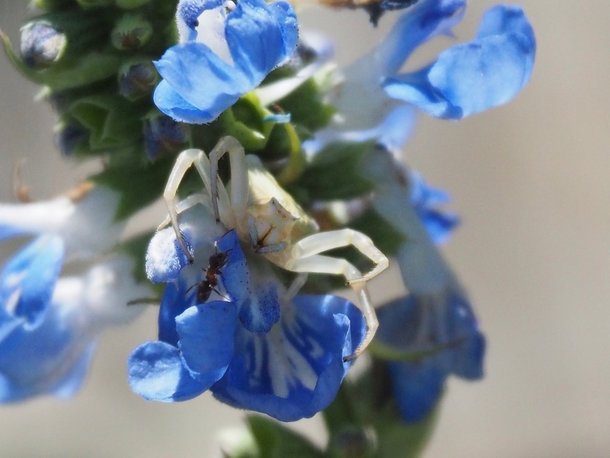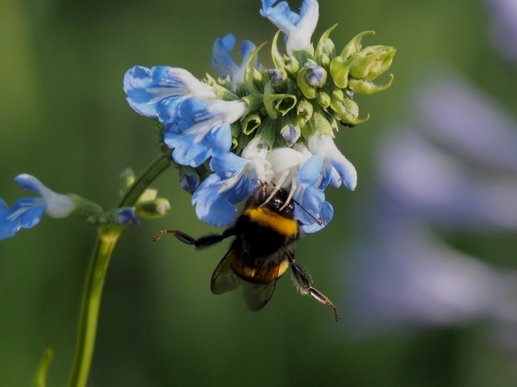24th July, despite the heat, I decided to check on a small colony of bee eaters nesting in the north bank of the Tech near the Moulin de Breuil vineyard. There wasn't much activity - only two nest holes still being visited by adults as far as I could see - so perhaps the others had fledged already. Apart from the surprise sighting of a honey buzzard, carrying prey, there were few other birds in evidence. It was a different story for insects, of course; high summer is truly their time. July is marked by the constant grate of cicadas in trees, by grasshoppers and crickets hopping out of your way in grassland, by flashes of colour from beetles, butterflies, dragons and damsels as well as the equally important, if arguably less welcome, flies and wasps.
After a while I left the river and headed along the flood defence wall towards the pond and wetland area of "Les Bachous". Eyes down now, looking out for dragonflies, which seem to love this hot spot, what brought me to halt and lift my camera was a different, big insect crossing my path. At first glance, its black-tipped yellow wings made me think it might be an exotic kind of fly. It didn't seem to notice me until I changed position to get a better photo, whereupon it opened its wings, to reveal a black and yellow striped abdomen. More likely a wasp, therefore. If I stood still, it closed its wings and carried on wandering - apparently aimlessly - but each time I moved, it flashed another warning. Clearly it was perfectly aware of me. Given its size (about 30mm) and how badly I react to stings from much smaller social wasps, I moved on.
Like the river, the pond appeared relatively quiet. There were the usual Floridan turtles, mallard, coot and little grebe. On my way to the north eastern end of the plateau above the water, a couple of herons took off from the trees beyond. The first was grey but, to my great and happy surprise, the second was purple. Unlike the grey, he or she circled round to fly very close - checking me out, I'm sure. Purples aren't common in the PO and currently there are no known breeding pairs, so this was a special moment.
Since it had rained a little the night before, I climbed a few feet up a bank to see if there were any fox prints around a large hole that I assumed was a den, having seen a young fox in just this spot in May. Instead of prints, however, I came upon another big wasp, like the one seen moments before. This one was running backwards at high speed, dragging a huge wolf spider in its jaws. Before I could even try to get a photo, it had disappeared backwards into the murky depths of the den! Unlikely there would be foxes here now, I thought, if these wasps had taken over occupancy. Talk about up-sizing your residence!
Seconds later, I spotted two more wasps running around frenetically a few feet away. These I managed to capture on film. The first few seconds are at full speed. Then I've slowed it by 50% (hence the "ralenti" in French) so the action is clearer.
Warning: some viewers may find this short scene disturbing.
To end with more pleasant images, I'll leave you with a bee eater (who may have one of those wasps in his beak, who knows?) and the purple heron, both from that morning, although the full beauty of each is somewhat hidden against the light.
